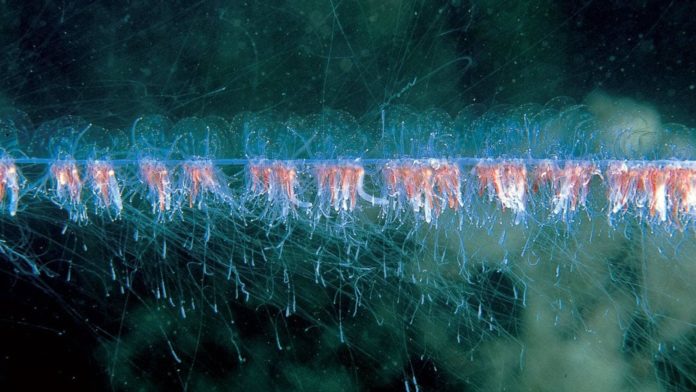Farmers should consider slaughtering the entire stock in affected enclosures to prevent prolonged suffering says food safety authority.
The Norwegian Food Safety Authority, Mattilsynet, has issued an urgent advisory to fish farmers following reports of widespread deaths among farmed salmon due to attacks by the venomous barbed-wired jellyfish.
These jellyfish have been found in multiple production areas in recent days, causing severe harm to farmed salmon populations.
The venom of the barbed-wire jellyfish inflicts burns on the skin and gills of the salmon, leaving them susceptible to infection, stress, and an increased risk of other diseases.
In response, Mattilsynet is calling on fish farmers to update their preparedness plans and take immediate preventative measures to mitigate long-term suffering for affected fish.
“It is the responsibility of fish owners to protect their stock from prolonged suffering in these situations,” said Bård Skjelstad, Director of the Aquaculture Supervision Division at Mattilsynet. He emphasized the need for farms to act quickly: “Implement preventative measures if available, and ensure robust emergency preparedness. Farmers must respond swiftly if they experience attacks by barbed-wire jellyfish.”
Mattilsynet advises that any fish with significant injuries from jellyfish attacks, and with poor prospects for recovery, should be promptly removed and humanely euthanized. If it is not feasible to remove individual fish, farmers should consider slaughtering the entire stock in affected enclosures to prevent prolonged suffering, even if no directive from Mattilsynet has been issued.
“It is unacceptable to face another winter where almost half the fish slaughtered have open wounds, as was the case last year,” said Skjelstad.
Guidelines for Fish Farmers
In the event of jelly fish attacks, Mattilsynet recommends that fish farmers ensure:
- Regular and systematic monitoring of fish welfare in affected enclosures to assess the extent and progression of injuries.
- Adequate slaughter capacity to handle sudden increases in affected stock.
- Sufficient capacity for the removal and handling of dead or injured fish, in proportion to the size and number of fish in each facility.
For further guidance, fish farmers are encouraged to contact Mattilsynet for additional resources and regulatory support.


